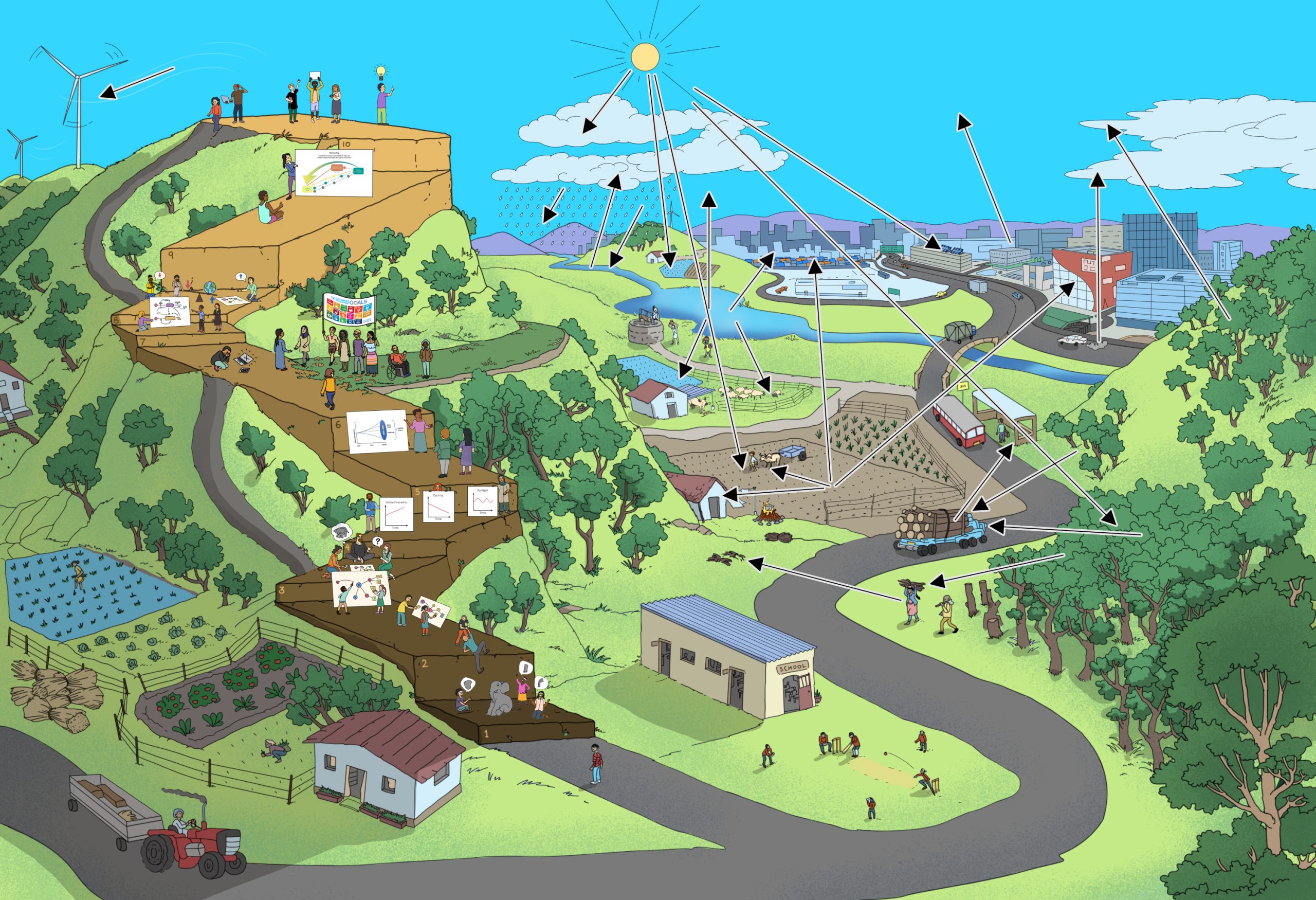Systems thinking is the ability to describe and/ or visualise a part of a complex reality, express that part of reality as a model, understand the model as a system, use the model to explain the behaviour of the system, anticipate the behaviour of the system, and evaluate its impacts on sustainable development, identify potential points of, and types of interventions, generate options to act, assess their impacts in the frame of sustainable development, and decide whether further actions are necessary or not.
1. What does this mean?
The learners have to understood that systems have dynamic behaviour. In this Step they learn that it may be possible to change the behaviour of the system consciously or with a specific intention.
The first step is to identify where to intervene in the system, that is, identify ‘leverage points’ as points that are most likely to succeed or have the desired impact.

What is a leverage point?
In the physical world, ‘leverage’ occurs when an input of force into a system generates a greater output force. Leverage is about relative efficiency and efficacy of possible interventions. A ‘leverage point’ within a system is that point where you place your ‘lever’ to cause the maximum intended impact, with a minimum of input, such as efforts or funds.
Use concept maps illustrating the chips and jeans systems examples, where the leverage points are marked.
- Concept map of the Jeans system with leverage points
- Concept map of the Chips system with leverage points
Read Leverage Points: places to intervene in a system by Donella Meadows at
http://www.donellameadows.org/wp-content/userfiles/Leverage_Points.pdf
2. What is the aim?
- Understand what a leverage point is in the context of a system
- Understand there may be different leverage points with different efficacies within a system
- Apply their understanding to identify leverage points in their systems.
4. Activities, tasks and suggested learning methods
First, to help learners understand what a leverage point is:
- Show the Niki Lauda video (Minute 3.55).Facilitate a discussion among the learners to identify different leverage point(s) in the story. (These include for example: the gear stick, attraction between people, character of the driver, capacity of the engine).
- Discuss how the speed of a moving vehicle, say a bicycle, car or boat can be controlled (especially, if it is not possible to use the Niki Lauda video). For example, in a car, the gear stick is a leverage point. In a boat, it is the paddle. Are there other leverage points as well? (E.g., the accelerator or the brake in a car).
Having learnt about Leverage Point, learners should:
- Take a good look at their system model and identify such components that can influence the behaviour of other elements. Are certain components in the system model are more influential than others. Do changes in these components ultimately cause the system to behave in a certain way?
- Compare the effect of the behaviour of particular elements on the behaviour of the whole system. The more influential components may be “leverage points”.
- Think about the part of the system they should intervene in, to change the behaviour of the system.
Finally, learners use the output and discussions of Step 3 (systems diagram) to mark leverage points in their system diagram.
Learning methods suggested are:
5. Conclusion
- Reflect on what is learnt thus far, summarizing the activity
- Ask the group to think about and share further questions about the system.
- The answers to these further leading questions may be discussed in the next (or one or more of the next steps).
Illustration of staircase model for further leading questions
6. Suggested Further Leading Questions
- How can leverage points be used to achieve an intended behaviour of the system?
- Are there possibilities for different types of intervention/s?
- Who decides that an intervention should be made, and with what aim?


